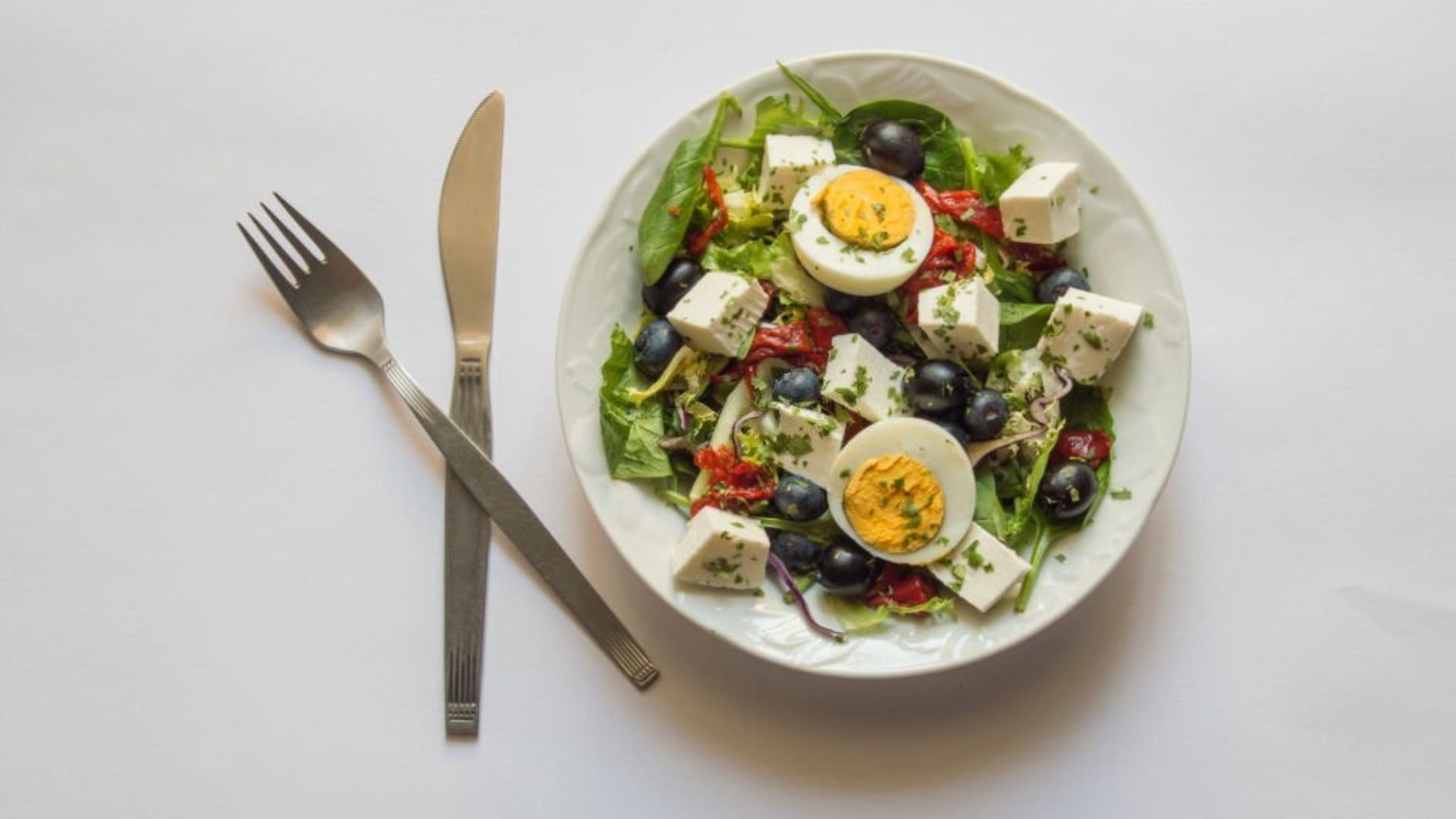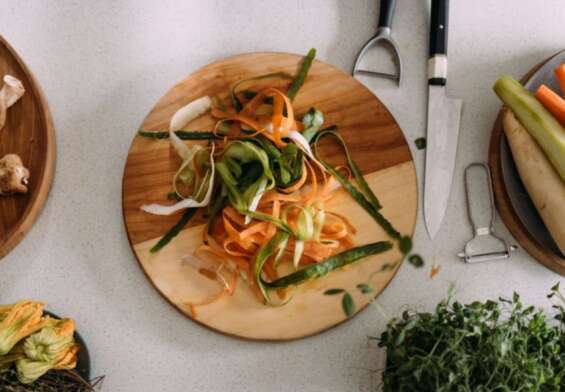
Wild Diet: Burn Fat, Beat Cravings, and Boost Energy!
The Wild Diet is a modern diet plan designed to help you feel healthier, look better, and lose weight. It focuses on eating natural, whole foods and avoiding processed, refined, and packaged foods. The goal of the diet is to maximize nutrient density and minimize calories. The diet emphasizes high-fiber, nutrient-rich foods, healthy fats, and lean proteins. Additionally, it encourages mindful eating and portion control. Unlike some other diets, the Wild Diet does not require counting calories or measuring portions. Rather, it encourages you to listen to your body’s hunger and fullness cues and to eat only when you’re truly hungry. This approach helps to reduce overeating and snacking. The Wild Diet is suitable for most people, although it is not recommended for pregnant women, those with certain medical conditions, or those who are underweight.
The Benefits of Eating Wild: How the Wild Diet Can Help Improve Your Health
Are you looking for ways to improve your health and well-being? Looking to move away from processed and unhealthy foods? Then you should consider eating wild!
Wild foods often come from the wild and are free of the hormones, antibiotics, and chemicals found in many commercially raised, processed foods. Wild foods provide an abundance of vitamins, minerals, and other nutrients that can help your body to stay healthy and keep your immune system strong.
Eating wild can provide a number of benefits, including:
- Improved digestion: Wild foods are packed with fiber, which can help reduce constipation, bloating, and other digestive issues.
- Enhanced immunity: Wild foods contain antioxidants and other compounds that can help boost your immune system and fight off disease.
- Increased energy: Wild foods are nutrient-rich and can provide your body with the energy it needs to function properly.
- Reduced inflammation: Wild foods are full of anti-inflammatory compounds that can help reduce inflammation in the body, which can help protect against chronic diseases like heart disease and diabetes.
- Increased nutrient density: Wild foods are rich in essential vitamins, minerals, and other nutrients that can help keep your body functioning optimally.
- Better mood: Wild foods are rich in B vitamins and other compounds that can help boost your mood and help reduce stress.
Eating wild is a great way to improve your health and well-being, and the benefits are numerous. So if you’re looking for a healthier diet, consider adding some wild foods to your plate!
Fighting Cravings with the Wild Diet: How to Satisfy Your Appetite without Eating Unhealthy Foods
Are you tired of fighting cravings for unhealthy foods? Do you wish you could satisfy your appetite without giving into temptation? Well, you’re in luck! The Wild Diet is a great way to beat cravings and enjoy healthy, tasty meals.
The Wild Diet focuses on eating whole, unprocessed foods like fruits, veggies, nuts, seeds, and healthy proteins. This lifestyle involves avoiding processed foods, refined sugars, and unhealthy fats. Instead, you focus on eating lots of nutrient-dense whole foods that provide your body with the energy it needs.
The Wild Diet also encourages you to eat more mindfully. Rather than mindlessly snacking on unhealthy foods, take the time to savor every bite of your meals and snacks. This will help you stay satisfied for longer and reduce cravings for unhealthy options.
Another great way to beat cravings on the Wild Diet is to keep a food journal. Writing down what you eat each day will help you identify patterns and triggers that may lead to cravings. Once you know what’s causing your cravings, you can better manage them with healthier options.
Finally, don’t forget to stay hydrated. Drinking plenty of water throughout the day can help reduce cravings and keep you feeling full. Plus, water is essential for your body’s overall health and wellness.
By following the Wild Diet, you can satisfy your appetite without eating unhealthy foods. Focus on eating whole, unprocessed foods, practice mindful eating, keep a food journal and stay hydrated. With a few simple tweaks to your lifestyle, you can beat cravings and enjoy a healthier, happier life.
Transitioning to the Wild Diet: Tips for Making the Switch Easier
Making the switch to a wild diet is a great way to improve your health and lifestyle. However, it can also be a daunting transition. Here are some tips to make the switch easier:
- Start Slow: Don’t try to go all in right away. Try to transition gradually, by replacing processed foods with whole, natural ingredients.
- Get Educated: Educate yourself on the benefits of wild foods and the basics of wild dieting. This will help you stay motivated and on track.
- Stock Up: Stock your kitchen with wild foods and ingredients. This will make it easier to cook wild meals and snacks.
- Cook at Home: Cook your own meals instead of relying on take-out or pre-packaged foods. This will help you get used to the flavors and textures of wild foods.
- Get Creative: Get creative with your cooking. Try new recipes, experiment with different ingredients, and find ways to make wild meals enjoyable.
- Don’t Stress: Don’t beat yourself up if you slip up. It’s normal to make mistakes. Just pick yourself up and keep going.
Making the switch to a wild diet can be a challenge, but it doesn’t have to be overwhelming. With a little bit of patience and planning, you can make the transition easier.
Plant-Based Eating with the Wild Diet: The Benefits of Eating More Fruits and Veggies
Eating a plant-based diet is becoming increasingly popular these days, and for good reason. Eating more fruits and vegetables is one of the best ways to improve your health and well-being. Here, we’ll explore the benefits of eating more plant-based foods and why the Wild Diet is a great way to do just that.
First, let’s talk about the health benefits of plant-based eating. Eating more fruits and veggies boosts your nutrient intake, helping you get essential vitamins and minerals that your body needs. Fruits and veggies are also low in calories, making them great for weight loss. Plus, they’re packed with fiber and antioxidants, which can help reduce inflammation and protect against diseases like cancer and heart disease.
The Wild Diet also encourages eating more plant-based foods. It focuses on whole, unprocessed foods that are naturally free of added sugar, preservatives, and other unhealthy ingredients. The Wild Diet recommends eating a variety of fruits, vegetables, nuts, seeds, and legumes. It also encourages the consumption of healthy fats like olive oil and avocado.
In addition to the health benefits, plant-based eating can also help the environment. Eating more fruits and vegetables reduces your carbon footprint and reduces the amount of water and energy used for food production. It also helps preserve natural resources and reduce pollution.
Overall, the Wild Diet is a great way to start eating more plant-based foods. It’s easy to follow and can help you get the nutrients your body needs. Plus, it’s good for your health and for the planet. So if you’re looking to get healthier and do your part for the environment, give the Wild Diet a try!
Wild Superfoods: Incorporating Nutrient-Rich Foods into Your Diet
Hey everyone! Eating healthy doesn’t have to be boring. Today we’re going to talk about incorporating nutrient-rich superfoods into your diet. Superfoods are packed with vitamins and minerals, and when added to your meals, they can help you get the most out of your diet.
Let’s start with quinoa. This ancient grain is a great source of protein, as well as other essential vitamins and minerals like iron and magnesium. Quinoa is also high in fiber, which helps keep you feeling full for longer. Try adding it to salads or using it as a base for a burrito bowl.
Next, let’s talk about blueberries. These tiny berries are a powerhouse of antioxidants and nutrients. They’re a great addition to your morning oatmeal or smoothie. You can even add them to salads or bake them into muffins.
Avocados are another great source of healthy fats. Not only are they incredibly flavorful, but they’re also packed with potassium and other essential vitamins and minerals. Mash them up for guacamole or slice them up and add them to your favorite sandwich.
Finally, let’s talk about nuts. Nuts are a great source of healthy fats and protein. They make a great snack on their own, or you can add them to salads and other dishes.
As you can see, there are plenty of delicious and nutritious superfoods out there. Try adding some of these nutrient-rich foods to your diet and you’ll be sure to feel the benefits. Have fun experimenting and enjoy!
Stocking a Wild Pantry: Essential Items for Following the Wild Diet
Stocking a Wild Pantry is a great way to follow the Wild Diet and get the most out of your meals. Here are some essential items to have on hand:
Grass-fed Beef: If you’re following the Wild Diet, grass-fed beef should be a staple. It’s high in protein and healthy fats, so it’s great for keeping your energy levels up and your hunger pangs down.
Organic Eggs: Organic eggs are a great source of protein, and they’re also packed with vitamins and minerals. Whether you’re making omelets, scrambles, or hard-boiled eggs, they’re an essential part of the Wild Diet.
Organic Vegetables: Eating plenty of vegetables is key to the Wild Diet, so be sure to stock up on organic veggies like spinach, kale, carrots, and bell peppers. Not only are they packed with vitamins and minerals, but they also add tons of flavor and texture to your meals.
Olive Oil and Coconut Oil: These two oils are essential for cooking on the Wild Diet. They’re loaded with healthy fats, and they add a delicious flavor to whatever you’re cooking.
Nuts and Seeds: Nuts and seeds are a great source of healthy fats and protein, and they’re also a great way to add texture and crunch to your meals. Stock up on almonds, walnuts, chia seeds, and flaxseeds for the perfect snack.
Herbs and Spices: Herbs and spices are a must for the Wild Diet. They can make all the difference in your meals, adding flavor and zest without adding extra calories. Stock up on classic favorites like oregano, thyme, cumin, and garlic powder.
With these essential items in your pantry, you’ll have everything you need to whip up delicious and nutritious Wild Diet-friendly meals. Bon appétit!
The Wild Diet and Mindfulness: How to Eat Intuitively with the Wild Diet
Are you looking to lose weight, feel better, and increase your energy? If so, the Wild Diet may be the perfect approach for you. The Wild Diet is based on the principles of eating real, whole foods and being mindful of your choices. With mindful eating, you can learn to tune in to your body’s cues and stop when you’re full.
The Wild Diet is all about eating the way nature intended. This means eating mostly unprocessed foods like fruits, vegetables, nuts, seeds, and lean proteins. Foods that have been processed or contain added sugars, artificial ingredients, or unhealthy fats should be avoided.
The Wild Diet is about more than just food. It also emphasizes being mindful of your choices and how you’re feeling. Eating mindfully means being aware of how hungry you are and what kind of food you’re eating. This can help you make better decisions about what to eat and when to stop.
When it comes to eating intuitively, the Wild Diet encourages you to tune into your body’s signals. This means paying attention when you’re full and not eating more than your body needs. It also means listening to your body’s cues to determine which foods make you feel energized and which make you feel sluggish.
The Wild Diet is a great way to learn to eat intuitively and take control of your health. By paying attention to your body’s signals and making mindful food choices, you can start feeling better and losing weight. So, if you’re ready to start eating the Wild way, get ready for some big changes!
Conclusion
The Wild Diet is an effective approach to weight loss that emphasizes a whole-food approach to eating. It focuses on nutrient-dense foods and encourages mindful eating habits. While it does not provide a quick fix for weight loss, it does offer long-term sustainable results that can improve overall health and wellness. With its emphasis on whole foods, balanced nutrition, and mindful eating, the Wild Diet is an excellent choice for anyone looking to make lasting changes to their diet and lifestyle.











